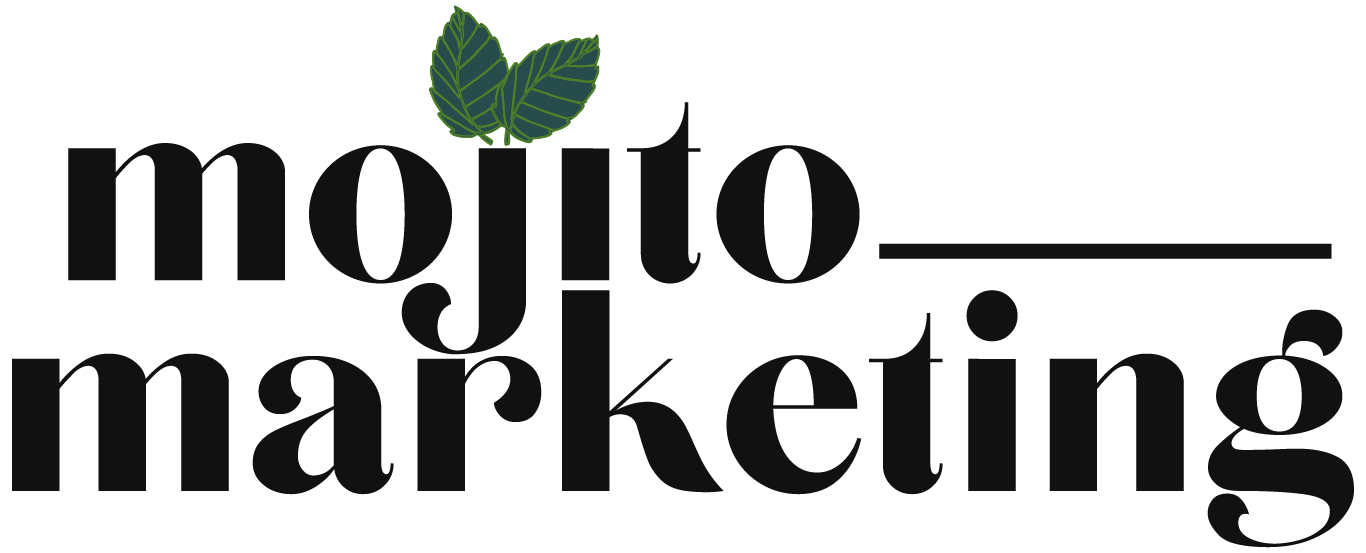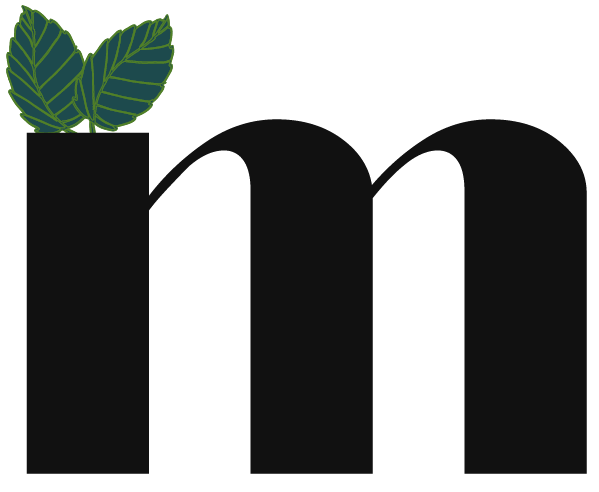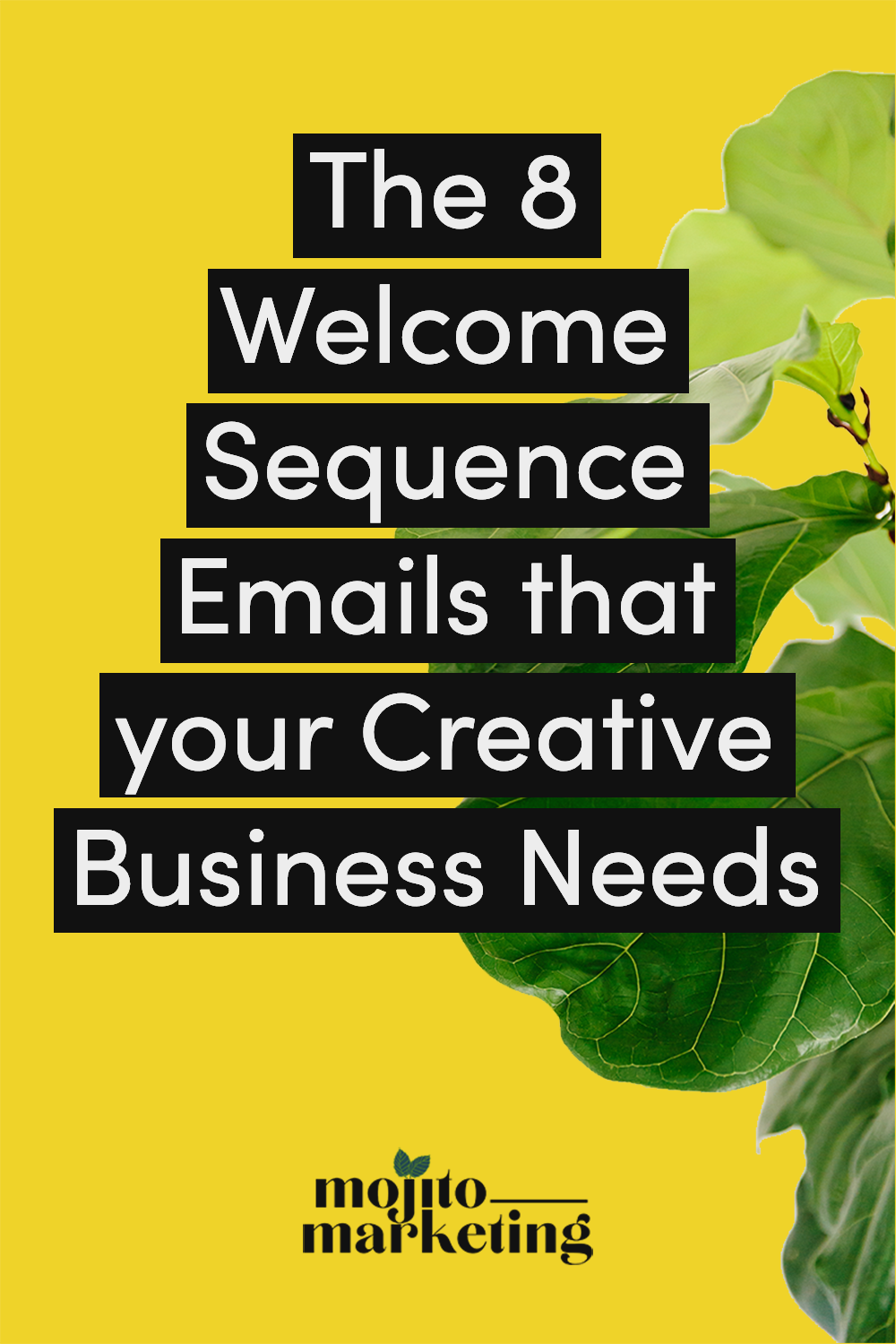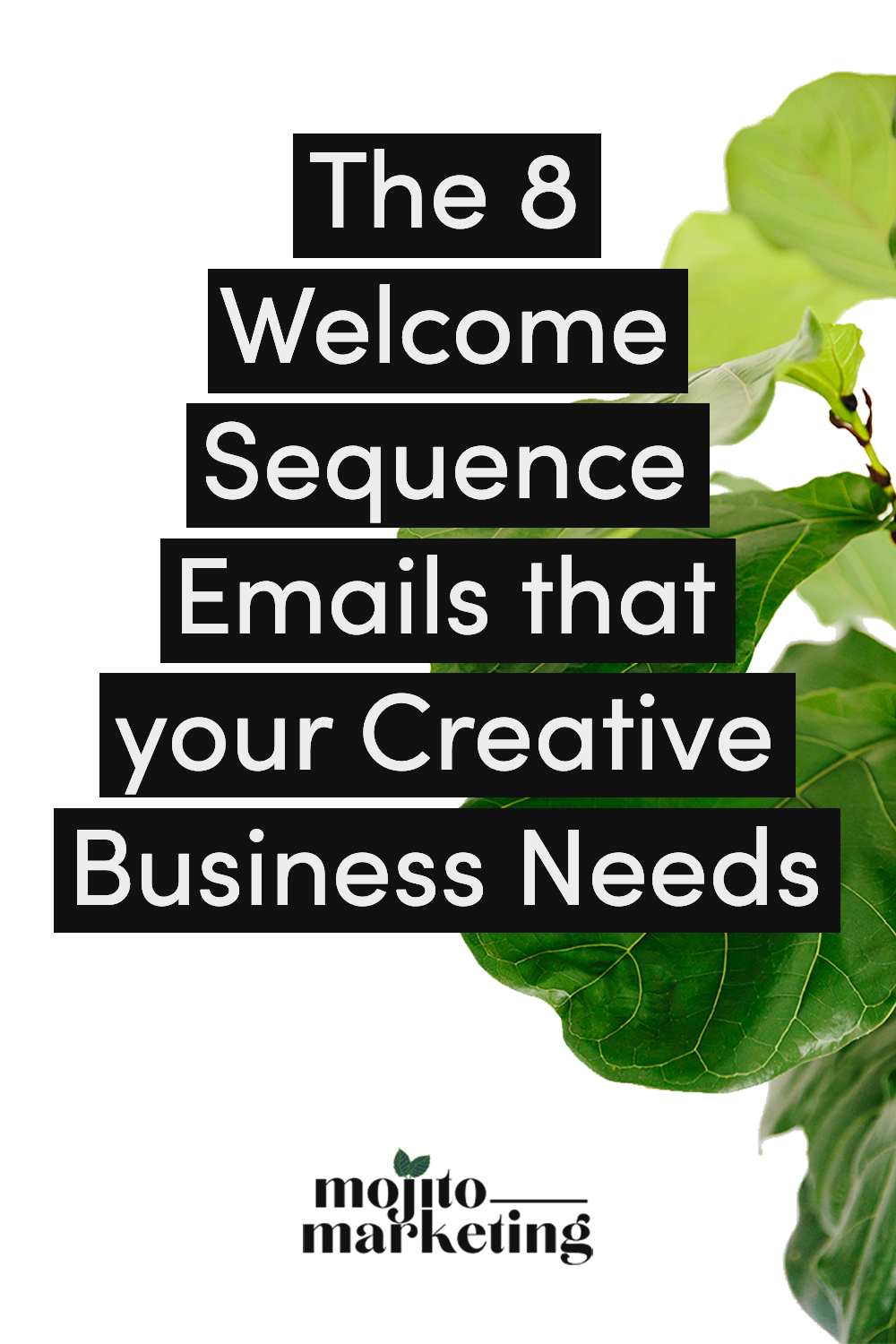The 8 Welcome Sequence Emails that your Creative Business Needs
Welcome sequence emails! How many do you need? What goes in them? Can I get away with 1 or 2? But first, the most important question.
Do you even need a welcome sequence?
Yes.
In a perfect world (if you’re an extrovert) you would be able to have long conversations with every single lead you want to convert. But that’s dreadfully unrealistic when your goals involve serving more people via courses, programs, and digital products. That doesn’t mean that conversation won’t happen. Your welcome sequence takes the place of that conversation because it is your leads first introduction to who you are, what you do, and how you can help them.
But this conversation never happens at once (even in real life) because you need to take the time to feel each other out and see if you want to take it to the level of working together.
Imagine having this conversation (introducing and pitching yourself) at a business conference.
Throughout the room you see a few people that you think you ‘can help. Their presence at this particular event says they may be ideal clients and you want to take the time to learn more about them. It would be weird to walk up to a crowd of those people and say, “Hi. I’m [INSERT NAME], I help [INSERT KIND OF BUSINESS OWNER YOU HELP] by offering [INSERT PRODUCTS & SERVICES]. I have this great offer of [INSERT YOUR GREAT OFFER], would you like to buy it from me?
You (hopefully) wouldn’t start the conversation like that. Instead, you’d work your way over to them and break the ice by talking about how gorgeous their hair looks, the line at the snack table, or ask them if they enjoyed the previous speaker.
And then you make a little small talk that moves into a convo about business (because that’s why you’re at this conference in the first place). Once business enters the conversation, 1 of 3 things can happen.
Maybe you don’t connect at all and the two of you slither into separate corners to avoid each other for the remaining days of the conference.
Or maybe you find out you’re connecting and make arrangements to meet up after the conference.
Or the best case scenario happens. You two are REALLY connecting and you end up huddled together strategizing with your brand new client (who has given you money).
The same conversation and cues take place in your welcome sequence emails when they are used to show your value over time. Here’s how those same three scenarios play out via your welcome sequence.
Maybe you don’t connect at all … this is when someone unsubscribes from your list (you want people who don’t want to be there to unsubscribe).
Make arrangements to connect after the conference? This is what it looks like when someone continues on your list and stays engaged after the welcome sequence is over.
And the best case scenario? That’s what it looks like when someone buys an offer from you during your welcome sequence!
So you’re convinced. Now let’s build out that welcome sequence. Together we’ll walk through 8 welcome sequence emails and why you need them.
Email #1: The Confirmation Email
What is this email about? This email is delivered immediately after your lead subscribes to download your opt-in (aka lead magnet). This email is short and sweet but there are a few key points to hit, including:
Thanking them for downloading your opt-in.
Sharing the benefits of using this opt-in.
Introducing why you are an expert on this topic.
In the confirmation email you want to give them the basic information they asked for and get them excited about using the opt-in you created for them! In later emails you’ll do more work wooing them, but for now start here.
Why do you need this email? You have to deliver the opt-in!
Email #2: The Real Intro Email
What is this email about? In the Real Intro, you break down who you are, what you do, and how you help in detail. Share secrets. Talk about your obsession with Mimosa flavored pre-workout, blue-light blocking glasses, and extreme lack of luck with dating app life (personal problems). The goal is to make yourself seem like a real person. All the while weaving in your story about how you grew to learn how important [INSERT THING YOU DO] is.
Why do you need this email? Let me be super clear about this. This email is NOT about you. This email is about why someone should care about who you are and what you do. You’re establishing yourself as an authority on your topic and not just talking about how you love long walks on the beach. Well, unless you’re selling beaches.
Email #3: The Pained Point Email
What is this email about? In the Pained Point you’re breaking down the biggest problem your opt-in solves. Be very descriptive in explaining the issue they are facing. Make them feel like you are literally inside their head as they experience the problem.
In the next email, you’ll present the solution so you’ll want to close off on a higher note by teasing that. This email can get a little intense.
Why do you need this email? The Pained Point email isn’t a fun one to read if your lead isn’t ready to do anything about it. But if they are are ready it’s a motivational email that tells them they are on the right path and that they’ve found someone that understands exactly what they are going through and can help them through it.
Want higher email open rates? Download the 5 Must Haves for Higher Email Open Rates and start today.
Email #4: The Future Pacing Email
What is this email about? If the Pained Point email it’s all about setting the scene of living with their pain point, the Future Pacing email is about painting the picture of life after the pain point.
Make a point of vividly describing what life will be like if your lead applies your teachings or (better yet) purchases an offer.
This email can be a real turning point in how your lead looks at you and the wins you can provide. This is the email I spend the most time rewriting and describing how this new future makes them feel. The goal is to make sure this email accurately captures how the lead feels once the solution to their pain point is in place. What are they spending their days doing? What are they NOT spending their days doing. How has conquering this pain point positively affected their personal life?
Why do you need this email? A great way to show your lead how you can work for them is showing them the result of their hard work. This email paints that picture.
Email #5: The Testimonial/Feature Email
What is this email about? The topic of this depends on where you are in your business. Do you have valuable testimonials from your previous customers that you can share? Make this email all about them! Show how people who have followed your instructions have succeeded.
If you are just getting started or pivoting to a new offer this email may be more effective if you talk about the key features of your strategy. For example, I encourage people to use these tools when they are getting started with email marketing:
Google Analytics
Landing Pages
Opt-Ins
Tripwire
Welcome Sequence
A features email for me would break down specific benefits of using these tools to show why I continue to value them.
Why do you need this email? There are so many people doing what you do. What you want to do here is show why you stand out, how you’re different, and most importantly, why you work.
Email #6: The XX Reasons Why
What is this email about? Email #6 in your welcome sequence is a spin on the previous email. Again, it breaks down key features of your overall strategy by showing your leads why [INSERT THING YOU DO] is important in helping them grow their business/improve their lives but in numbered list form.
Why do you need this email? Listicles are always more scannable so this can make a quick read for your lead. If you share more evidence of this via your blog posts or other supporting sources, you can really cement how important what you do is to their growth.
Email #7: The What Comes Next Email
What is this email about? This email is mostly a pitch for your lead to stay on your list and stay engaged. You want to let them know what comes next if they stay on your list. Include specific information such as:
Email frequency,
Specific topics covered,
Opportunities to contribute (ie is there a survey they can complete to tell you what they want to know),
And anything else that would be helpful to know. Do you regularly send out a survey or host a giveaway offering a free strategy call (I know a biz owner who does this!)
Why do you need this email? While you have been sharing content throughout the other welcome sequence emails, you want to share the BEST content right now. Use Google Analytics to determine your most visited content.
Email #8: The Bridge
What is this email about? The Bridge is about helping them with a next level issue. It helps to set them up for content they may find on your general list (which they have been suppressed from this whole time) and shares more of your expertise.
Why do you need this email? This is a great pivot to show that you’re not JUST a one note business owner. Share that you can help them solve a bigger pain point after you tackle the one they initially came to you about (ie the opt-in they downloaded.
Ready to build this welcome sequence on your own? Download the Welcome Sequence Map to have a condensed version of the 8 emails, sequence timing, and a workbook to start drafting your welcome sequence emails for you.
Get the free guide 5 Must Haves for Higher Open Rates
A little busy? Pin this and save it for later!






